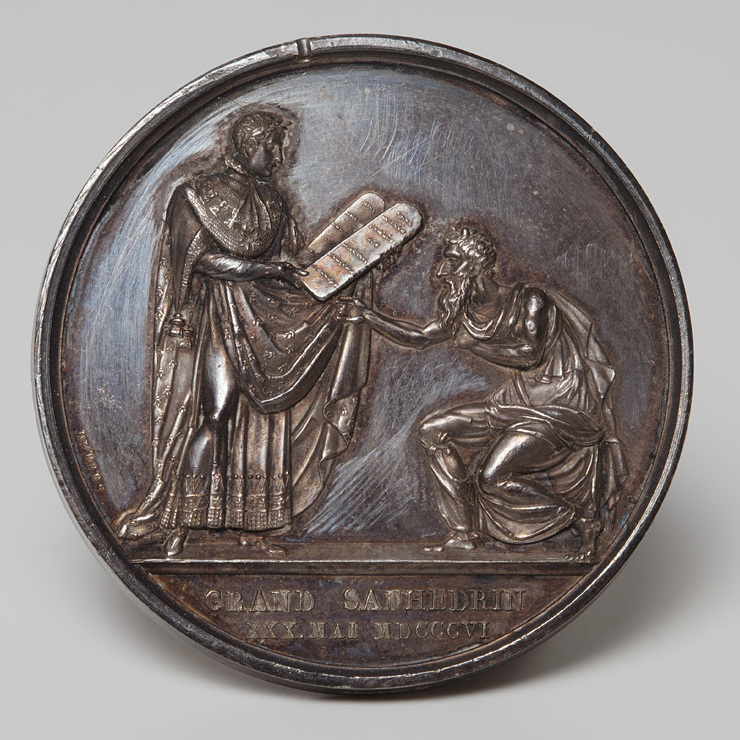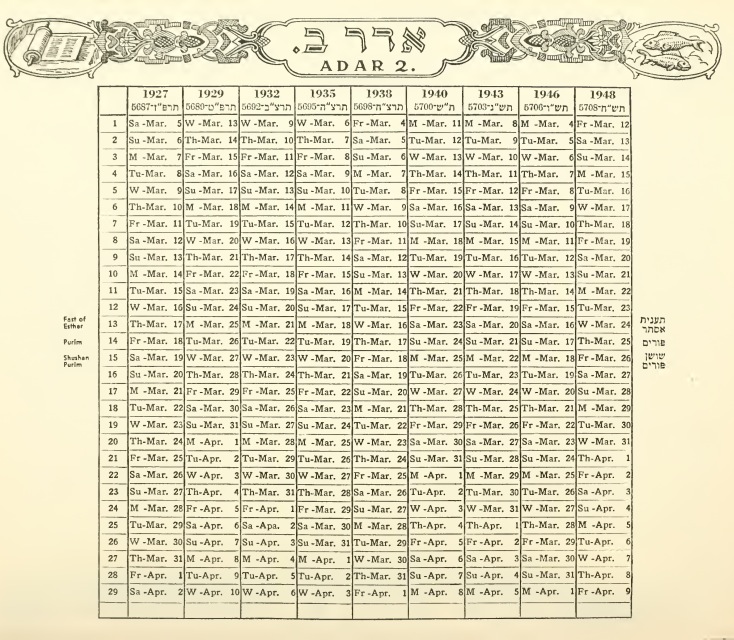|
Great Sanhedrin
The Sanhedrin (Hebrew and Aramaic: סַנְהֶדְרִין; Greek: , ''synedrion'', 'sitting together,' hence 'assembly' or 'council') was an assembly of either 23 or 71 elders (known as "rabbis" after the destruction of the Second Temple), appointed to sit as a tribunal in every city in the ancient Land of Israel. There were two classes of Rabbinite Jewish courts which were called Sanhedrin, the Great Sanhedrin and the Lesser Sanhedrin. A lesser Sanhedrin of 23 judges was appointed to sit as a tribunal in each city, but there was only supposed to be one Great Sanhedrin of 71 judges, which among other roles acted as the Supreme Court, taking appeals from cases which were decided by lesser courts. In general usage, ''the Sanhedrin'' without qualifier normally refers to the Great Sanhedrin, which was presided over by the '' Nasi'', who functioned as its head or representing president, and was a member of the court; the '' Av Beit Din'' or the chief of the court, who was second ... [...More Info...] [...Related Items...] OR: [Wikipedia] [Google] [Baidu] |
Jewish Holidays
Jewish holidays, also known as Jewish festivals or ''Yamim Tovim'' ( he, ימים טובים, , Good Days, or singular , in transliterated Hebrew []), are holidays observed in Judaism and by JewsThis article focuses on practices of mainstream Rabbinic Judaism. Karaite Judaism#The calendar, Karaite Jews and Samaritans#Samaritanism, Samaritans also observe the biblical festivals, but not in an identical fashion and not always at exactly the same time. throughout the Hebrew calendar. They include religious, cultural and national elements, derived from three sources: biblical ''mitzvot'' ("commandments"), rabbinic mandates, and the history of Judaism and the State of Israel. Jewish holidays occur on the same dates every year in the Hebrew calendar, but the dates vary in the Gregorian. This is because the Hebrew calendar is a lunisolar calendar (based on the cycles of both the sun and moon), whereas the Gregorian is a solar calendar. General concepts Groupings Certain term ... [...More Info...] [...Related Items...] OR: [Wikipedia] [Google] [Baidu] |
Rabbis
A rabbi () is a spiritual leader or religious teacher in Judaism. One becomes a rabbi by being ordained by another rabbi – known as '' semikha'' – following a course of study of Jewish history and texts such as the Talmud. The basic form of the rabbi developed in the Pharisaic (167 BCE–73 CE) and Talmudic (70–640 CE) eras, when learned teachers assembled to codify Judaism's written and oral laws. The title "rabbi" was first used in the first century CE. In more recent centuries, the duties of a rabbi became increasingly influenced by the duties of the Protestant Christian minister, hence the title "pulpit rabbis", and in 19th-century Germany and the United States rabbinic activities including sermons, pastoral counseling, and representing the community to the outside, all increased in importance. Within the various Jewish denominations, there are different requirements for rabbinic ordination, and differences in opinion regarding who is recognized as a rabbi. For ex ... [...More Info...] [...Related Items...] OR: [Wikipedia] [Google] [Baidu] |
Moses
Moses hbo, מֹשֶׁה, Mōše; also known as Moshe or Moshe Rabbeinu ( Mishnaic Hebrew: מֹשֶׁה רַבֵּינוּ, ); syr, ܡܘܫܐ, Mūše; ar, موسى, Mūsā; grc, Mωϋσῆς, Mōÿsēs () is considered the most important prophet in Judaism and one of the most important prophets in Christianity, Islam, the Druze faith, the Baháʼí Faith and other Abrahamic religions. According to both the Bible and the Quran, Moses was the leader of the Israelites and lawgiver to whom the authorship, or "acquisition from heaven", of the Torah (the first five books of the Bible) is attributed. According to the Book of Exodus, Moses was born in a time when his people, the Israelites, an enslaved minority, were increasing in population and, as a result, the Egyptian Pharaoh worried that they might ally themselves with Egypt's enemies. Moses' Hebrew mother, Jochebed, secretly hid him when Pharaoh ordered all newborn Hebrew boys to be killed in order to reduce the popul ... [...More Info...] [...Related Items...] OR: [Wikipedia] [Google] [Baidu] |
Hebrew Bible
The Hebrew Bible or Tanakh (;"Tanach" ''Random House Webster's Unabridged Dictionary''. Hebrew: ''Tānāḵh''), also known in Hebrew as Miqra (; Hebrew: ''Mīqrā''), is the Biblical canon, canonical collection of Hebrew language, Hebrew scriptures, including the Torah, the Nevi'im, and the Ketuvim. Different branches of Judaism and Samaritanism have maintained different versions of the canon, including the 3rd-century Septuagint text used by Second-Temple Judaism, the Syriac language Peshitta, the Samaritan Torah, the Dead Sea Scrolls, and most recently the 10th century medieval Masoretic Text, Masoretic text created by the Masoretes currently used in modern Rabbinic Judaism. The terms "Hebrew Bible" or "Hebrew Canon" are frequently confused with the Masoretic text, however, this is a medieval version and one of several ... [...More Info...] [...Related Items...] OR: [Wikipedia] [Google] [Baidu] |
Israel
Israel (; he, יִשְׂרָאֵל, ; ar, إِسْرَائِيل, ), officially the State of Israel ( he, מְדִינַת יִשְׂרָאֵל, label=none, translit=Medīnat Yīsrāʾēl; ), is a country in Western Asia. It is situated on the Eastern Mediterranean, southeastern shore of the Mediterranean Sea and the northern shore of the Red Sea, and Borders of Israel, shares borders with Lebanon to the north, Syria to the northeast, Jordan to the east, and Egypt to the southwest. Israel also is bordered by the Palestinian territories of the West Bank and the Gaza Strip to the east and west, respectively. Tel Aviv is the Economy of Israel, economic and Science and technology in Israel, technological center of the country, while its seat of government is in its proclaimed capital of Jerusalem, although Status of Jerusalem, Israeli sovereignty over East Jerusalem is unrecognized internationally. The land held by present-day Israel witnessed some of the earliest human occup ... [...More Info...] [...Related Items...] OR: [Wikipedia] [Google] [Baidu] |
Modern Attempts To Revive The Sanhedrin
Modern attempts to revive the Sanhedrin are the efforts from 1538 until the present day to renew the Sanhedrin which was dissolved in 358 by the edict of the Roman emperor Constantius II. (Though 358 was the last formal meeting, there is no record of when it was actually dissolved and by whom, nor any reference to the last nasi's execution.) The latest effort was in 2004 when a group of seventy-one rabbis claiming to represent varied communities in Israel undertook a ceremony in Tiberias, where the original Sanhedrin was disbanded. That group claimed to re-establish the body, based on the proposal of Maimonides and the Jewish legal rulings of Rabbi Yosef Karo. As of March 2010, that effort is ongoing and is supported by The Temple Institute. Sanhedrin in Judaism The Sanhedrin is traditionally viewed as the last institution which commanded universal authority among the Jewish people in the long chain of tradition from Moses until the present day. Since its dissolution in 358, the ... [...More Info...] [...Related Items...] OR: [Wikipedia] [Google] [Baidu] |
Napoleon Bonaparte
Napoleon Bonaparte ; it, Napoleone Bonaparte, ; co, Napulione Buonaparte. (born Napoleone Buonaparte; 15 August 1769 – 5 May 1821), later known by his regnal name Napoleon I, was a French military commander and political leader who rose to prominence during the French Revolution and led successful campaigns during the Revolutionary Wars. He was the ''de facto'' leader of the French Republic as First Consul from 1799 to 1804, then Emperor of the French from 1804 until 1814 and again in 1815. Napoleon's political and cultural legacy endures to this day, as a highly celebrated and controversial leader. He initiated many liberal reforms that have persisted in society, and is considered one of the greatest military commanders in history. His wars and campaigns are studied by militaries all over the world. Between three and six million civilians and soldiers perished in what became known as the Napoleonic Wars. Napoleon was born on the island of Corsica, not long a ... [...More Info...] [...Related Items...] OR: [Wikipedia] [Google] [Baidu] |
Grand Sanhedrin
The Grand Sanhedrin was a Jewish high court convened in Europe by Napoleon to give legal sanction to the principles expressed by an assembly of Jewish notables in answer to the twelve questions submitted to it by the government.Jew. Encyc. v. 468, s.v. France The name was chosen to imply that the Grand Sanhedrin had the authority of the original Sanhedrin that had been the main legislative and judicial body of the Jewish people in classical antiquity and late antiquity. Assembly of Notables An assembly of Jewish notables was summoned in April 1806 by the Emperor to consider a set of 12 questions. Those who attended were largely from the Bordeaux or Rhine regions (Alsace and Lorraine). They were led by Rabbi David Sinzheim of Strasbourg, who later became the chairman ("nasi") of the Grand Sanhedrin. The questions presented were: # Is it lawful for Jews to have more than one wife? # Is divorce allowed by the Jewish religion? Is divorce valid, although pronounced not by courts o ... [...More Info...] [...Related Items...] OR: [Wikipedia] [Google] [Baidu] |
Eastern Roman Empire
The Byzantine Empire, also referred to as the Eastern Roman Empire or Byzantium, was the continuation of the Roman Empire primarily in its eastern provinces during Late Antiquity and the Middle Ages, when its capital city was Constantinople. It survived the fragmentation and fall of the Western Roman Empire in the 5th century AD and continued to exist for an additional thousand years until the fall of Constantinople to the Ottoman Empire in 1453. During most of its existence, the empire remained the most powerful economic, cultural, and military force in Europe. The terms "Byzantine Empire" and "Eastern Roman Empire" were coined after the end of the realm; its citizens continued to refer to their empire as the Roman Empire, and to themselves as Romans—a term which Greeks continued to use for themselves into Ottoman times. Although the Roman state continued and its traditions were maintained, modern historians prefer to differentiate the Byzantine Empire from Ancient ... [...More Info...] [...Related Items...] OR: [Wikipedia] [Google] [Baidu] |
Hebrew Calendar
The Hebrew calendar ( he, הַלּוּחַ הָעִבְרִי, translit=HaLuah HaIvri), also called the Jewish calendar, is a lunisolar calendar used today for Jewish religious observance, and as an official calendar of the state of Israel. It determines the dates for Jewish holidays and the appropriate Torah reading, public reading of Weekly Torah portion, Torah portions, ''yahrzeits'' (dates to commemorate the death of a relative), and daily Psalm readings, among many ceremonial uses. In Israel, it is used for religious purposes, provides a time frame for agriculture, and is an official calendar for civil holidays, alongside the Gregorian calendar. The present Hebrew calendar is the result of a process of development, including a Babylonian calendar, Babylonian influence. Until the Tannaitic period (approximately 10–220 Common Era, CE), the calendar employed a new lunar phase, crescent moon, with an Intercalation (timekeeping), additional month normally added every two or ... [...More Info...] [...Related Items...] OR: [Wikipedia] [Google] [Baidu] |
Syria Palaestina
Syria Palaestina (literally, "Palestinian Syria";Trevor Bryce, 2009, ''The Routledge Handbook of the Peoples and Places of Ancient Western Asia''Roland de Vaux, 1978, ''The Early History of Israel'', Page 2: "After the revolt of Bar Cochba in 135, the Roman province of Judaea was renamed Palestinian Syria." la, Syria Palaestina ; grc-koi, Συρία ἡ Παλαιστίνη, Syría hē Palaistínē, ) was a Roman province in the Palestine region between the early 2nd and late 4th centuries AD. It resulted from the merging of the province of Judaea with Galilee, in 132 AD, into an enlarged province named "Syria Palaestina". Its capital was Caesarea Maritima. Background Judaea was a Roman province which incorporated the regions of Judea, Samaria, and Idumea, and extended over parts of the former regions of the Hasmonean and Herodian kingdoms of Judea. It was named after Herod Archelaus's Tetrarchy of Judaea, but the Roman province encompassed a much larger territory. The na ... [...More Info...] [...Related Items...] OR: [Wikipedia] [Google] [Baidu] |





